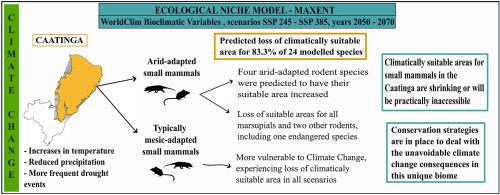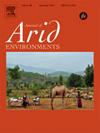Where could they go? Potential distribution of small mammals in the Caatinga under climate change scenarios
Abstract
Many organisms will respond to climate change by shifting their ranges while pursuing potential climatically suitable areas. Predicting these area changes is important especially in dry areas such as the Brazilian semiarid biome, the Caatinga. Here we identified which Caatinga areas would be climatically suitable for small mammal species under different climate change scenarios; and quantified how much of these potential suitable areas would be gained or lost for each species under each scenario by 2050 and 2070. The small mammal species fall into two main ecological groups: 1) arid-adapted species with good climatic suitability for most of the Caatinga (four rodents were predicted to experience gain in their total suitable areas, while there was loss of suitable areas for all marsupials and two other rodents) and 2) species with good suitability for highlands or transitions areas with the Atlantic Forest (typically more vulnerable to climate change, experiencing loss of suitable area). These are the first predictions of climatically suitable area potentially lost and gained for the Caatinga small mammals during future climate change scenarios. Our results reinforce the need to ensure that conservation strategies are in place to deal with the unavoidable climate change consequences in this unique biome.


| 公司名称 | 产品信息 | 采购帮参考价格 |
|---|
 求助内容:
求助内容: 应助结果提醒方式:
应助结果提醒方式:


